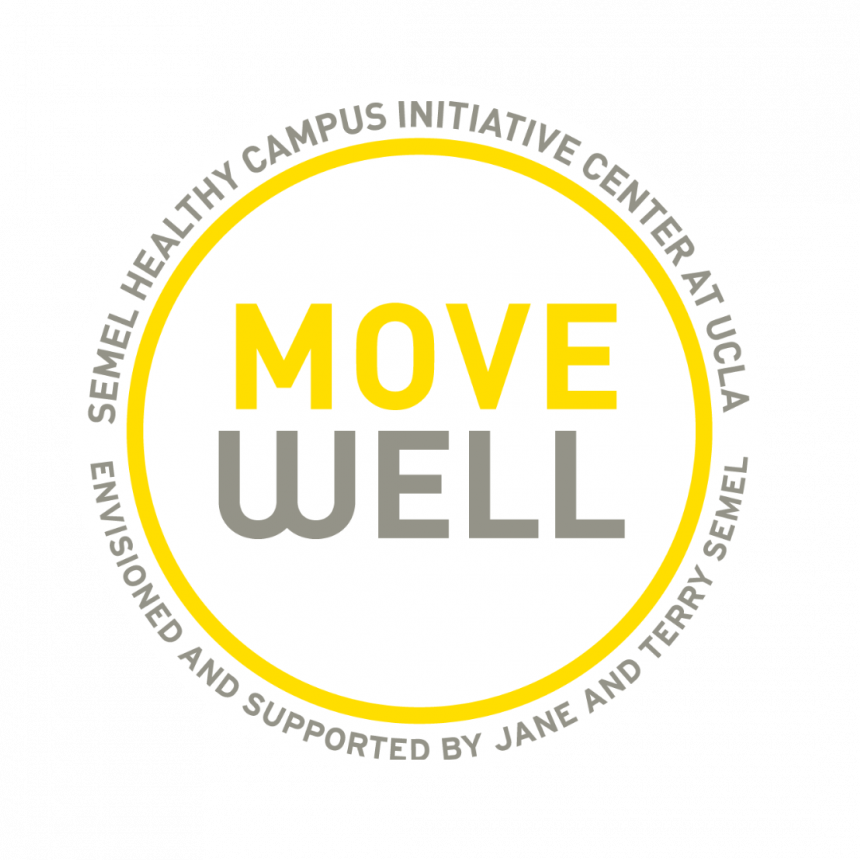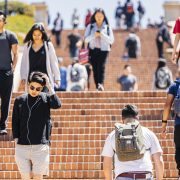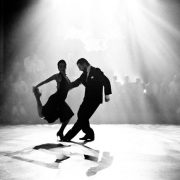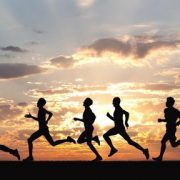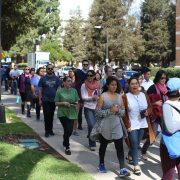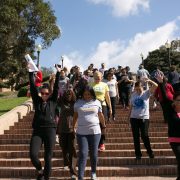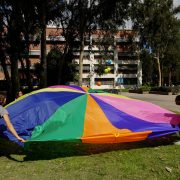Greetings from the Move Well Team!
Did you know that coordinated rhythmic movement rituals like dance have a mountain of health benefits?
The goal of this month’s MOVE WELL BLOG is to introduce you to the perceived health benefits associated with participating in dance classes. It’s never too late to begin to explore the practice of dance across any number of cultural traditions as a route to healthy living.
What’s that you say? You “can’t dance?”
If your personal dance “history” is limited-to-non-existent, or if you are otherwise a dance-skeptic, read on…or BETTER YET…scroll down to the FREE cultural dance events on the UCLA campus listed at the end of this post.
UCLA is home to an array of cultural dance offerings on campus, including some participatory free events in the coming days! For UCLA students in particular, we have listed some Winter Quarter dance offerings that may be flying under your radar.
For those of you who prefer to understand the “science” behind dance as a perceived health benefit, you may be surprised to know that, in addition to the deep cultural meanings that dance articulates across various movement traditions and geographical regions, neuro-cognitive experts have claimed that BOTH the doing and the witnessing of live dance performance can improve overall wellness and enhance quality of life. Dance and health writer Veronica Hackthal published a pair of eJournal articles on the benefits of dance participation this past summer for Dance USA, the national service organization for dance in the United States.
In Part One of her “Come Dance With Me” series, Hackthal champions the physical, psychological, and physiological processes that ritualized dance practices engender, at all stages of the lifespan. She cites neurocognitive changes that occur during and after dance practice (endorphin release, etc.,) that contribute to mood changes and that improve learning overall for those who take a chance on dance.
Read more from Hackthal on the scientific and practical uses of dance and brain function here:
Still UNCONVINCED?
Well, our best advice to quell your questioning mind and body is to TRY out a basic or introductory dance class. Dance is, after all, a movement practice that you can only LEARN by DOING. Make a commitment to yourself to “try some new moves” this month, and see how dance teaches you something about what you, and your body, can do.
Check out the campus dance opportunities available below at Bruin Plaza, Wooden Center, and in the Department of World Arts and Cultures/Dance in Glorya Kaufman Hall.
FREE CAMPUS WIDE EVENT: World Music & Movement Festival
When: November 16, 2013, 11am-5pm
Where: Bruin Plaza
With the prevalence of popular music and dance genres in social media, the chances of being exposed to unique cultural and traditional practices are rare. Even in Los Angeles, the most diversely populated city in California, there is still a lack of appreciation for diverse culture. Therefore, we are planning a World Music and Movement Festival to be held at UCLA on Saturday November 16th from 11am-5pm in Bruin Plaza. This festival will display world traditions through performing arts, in our effort to make the public more aware and involved with different cultural practices. **FREE** More information available on the World Music and Movement website.
UCLA Recreation Dance Classes (non-credit, open to campus community, enrollment is limited) Explore world history and culture through Dance. Throughout history, people across the world have used dance for self-expression, to tell stories, celebrate traditional events, and to maintain communal bonds. Whether you have limited dancing experience or you are perfecting your moves, our dance classes will help you relieve stress, ease tension, and tone muscle all while having a great time. So choose your pleasure and EXPRESS YOURSELF! http://www.recreation.ucla.edu/dance 3. Beginning Dance Courses Department of World Arts and Cultures/Dance Winter Quarter
**Students are encouraged to follow the DANCE subject header to the following offerings on URSA or the UCLA Schedule of Classes. Enrollment is limited, early registration is encouraged**.
DANCE 8: Beginning Afro- Brazilian T/R 430-550pm 2 credits
GKH 230 Instructor: Samantha Goodman Beginning-level study of world arts practices originating from Latin America, including cultures of South and Central America. Variable topics, such as Argentine tango and Mexican folkloric dances, in cultural and historical context. May be repeated for credit without limitation. P/NP or letter grading. Section Description: Introduction to Afro-Brazilian traditional and popular dances from region of Salvador, Bahia. Survey of variety of dances including Orixa (deity) movement, Dança Afro, Samba de Caboclo, and Samba Reggae. Exploration of uses of spine, body isolations, and energetic/expressive qualities inherent to these dances, as well as their rich cultural and historical contexts. DANCE 10: Beginning Tai Chi Chuan T/R 830-950am 2 credits GKH 1000 Instructor: Jason Tsou Beginning-level study of world arts practices originating from East Asia, including China, Korea, and Japan. Variable topics, such as movement and music techniques of Beijing Opera, Korean shamanic movement practices, and Kabuki theater, in cultural and historical context. May be repeated for credit without limitation. P/NP or letter grading. Section Description: Designed to help beginning students fully understand Tai Chi Chuan principles and their application in martial arts and meditational exercise. Emphasizes static and dynamic Tai Chi, method of yin-yang balance, Tai Chi Chikung (Qigong) with Tai Chi ball and Tai Chi bowl exercise, cycle and rhythm, five elements in Tai Chi Chuan, Reeling Silk energy built-up through random circle drills, and detailed studies on Yang and Chen style Tai Chi Chuan forms. DANCE 11: Beginning Bharata Natayam
M/W 1030-1150am 2 credits GKH 214 Instructor: V. Prakash Beginning-level study of world arts practices originating from South Asia and extending to cultures of South Asian diasporas, including communities in England and West Africa. Variable topics, such as Bharata Natyam (classical dance of India), bhangra (diasporic social dance), and hatha yoga, in cultural and historical context. May be repeated for credit without limitation. P/NP or letter grading. Section Description: Beginning positions, movements, and music of Bharata Natyam, classical dance form of India.
Happy Dancing! The Move Well Team
~Sarah Wilbur
MFA, PhD Candidate
UCLA Department of World Arts and Cultures/Dance
